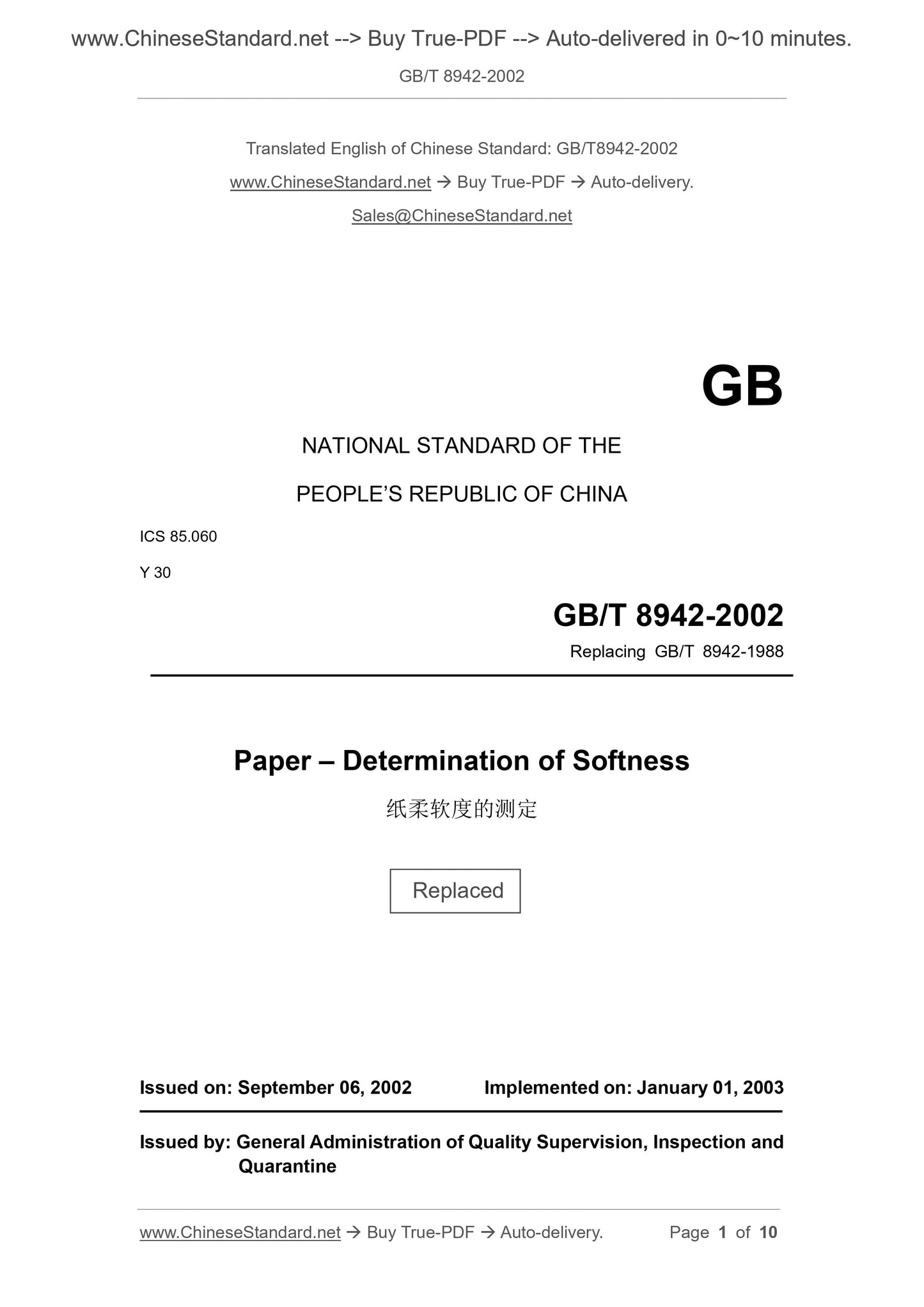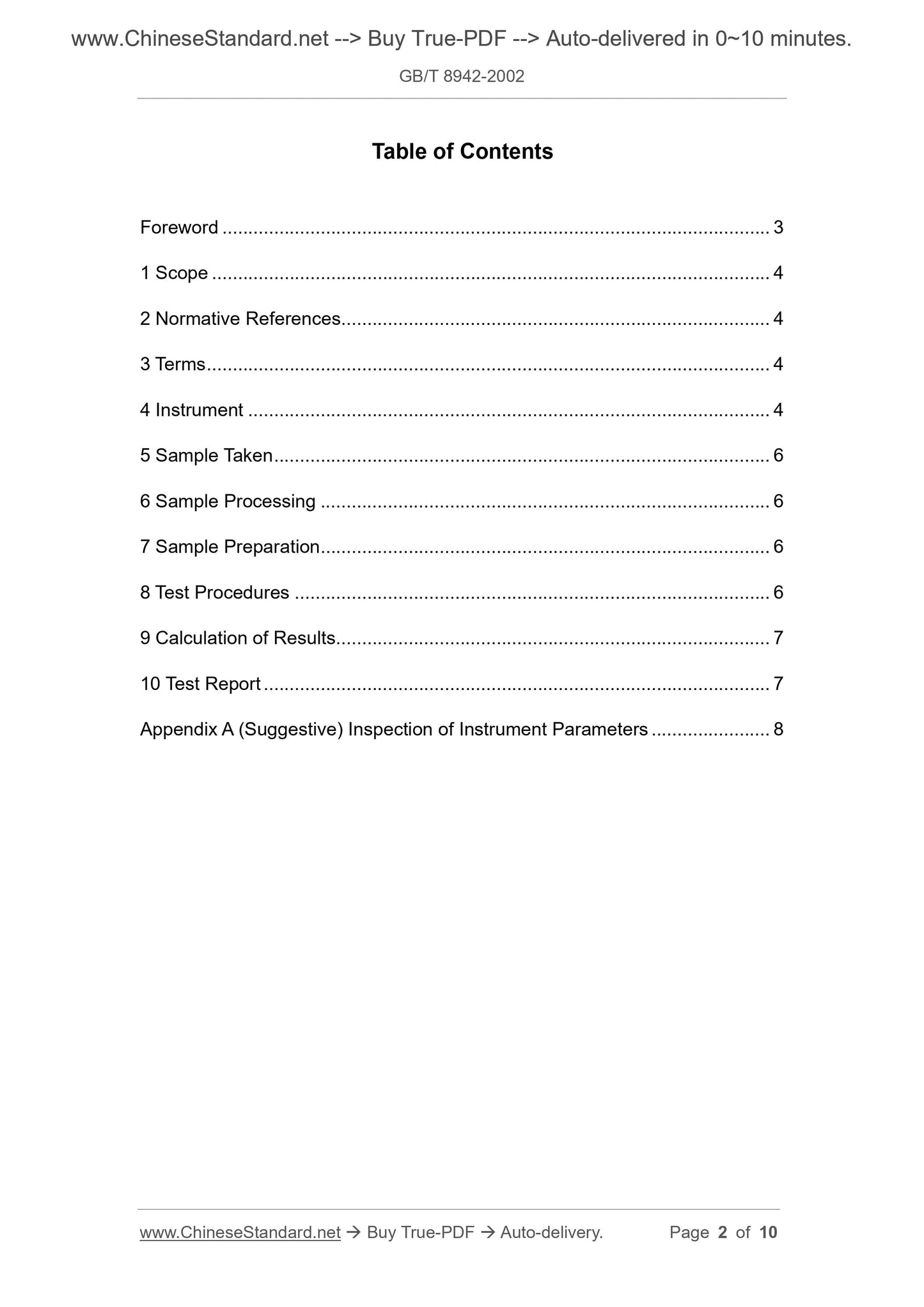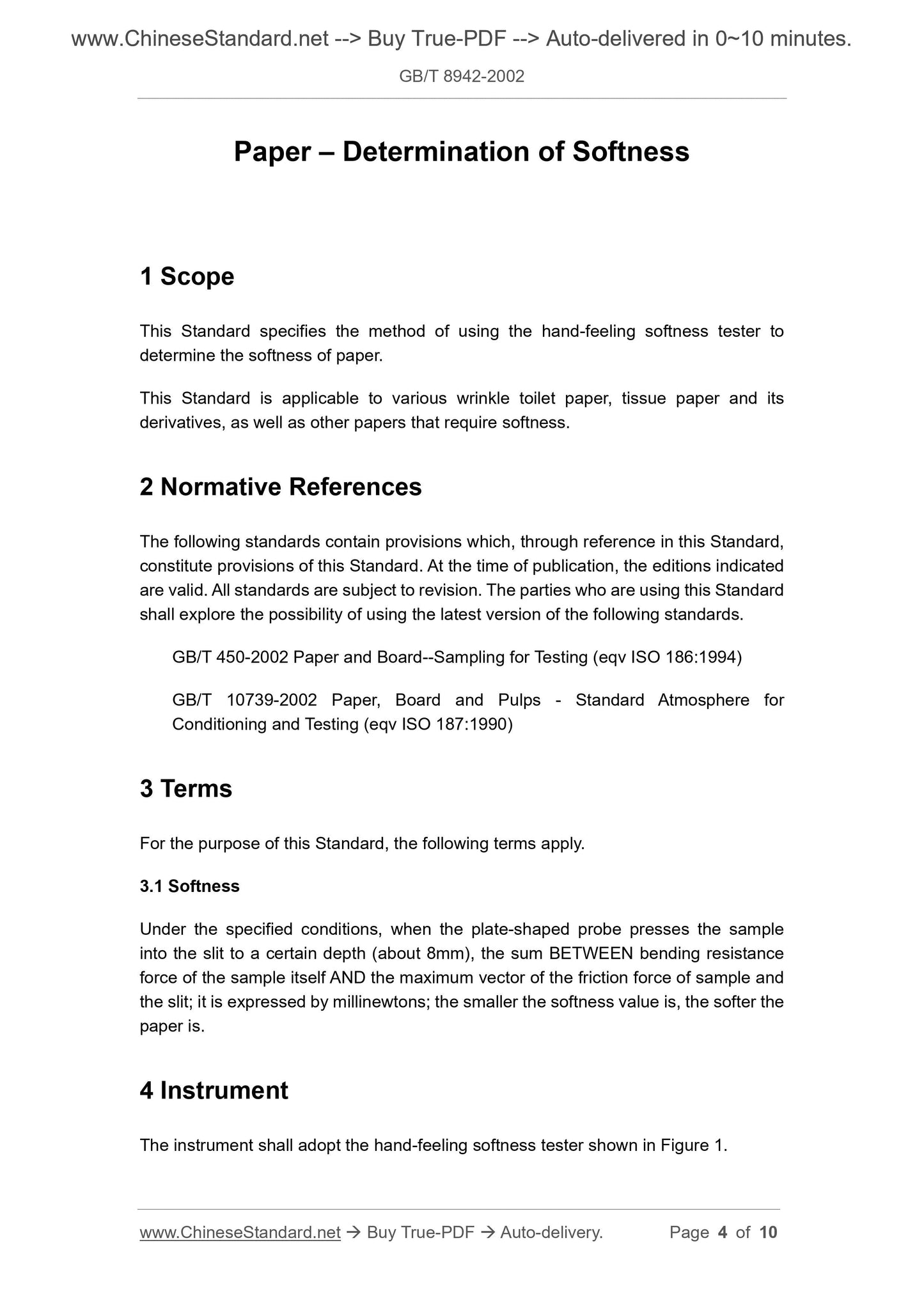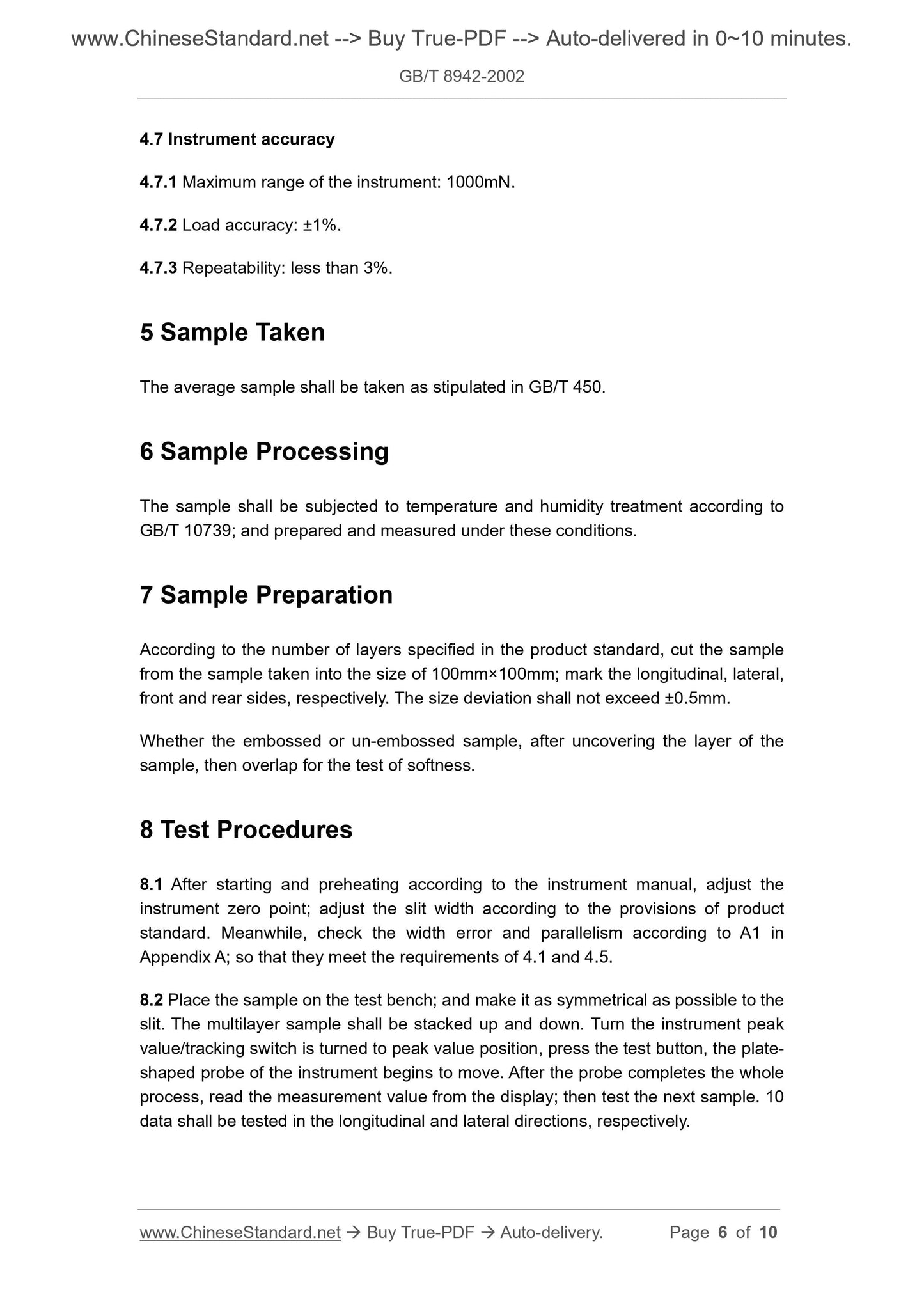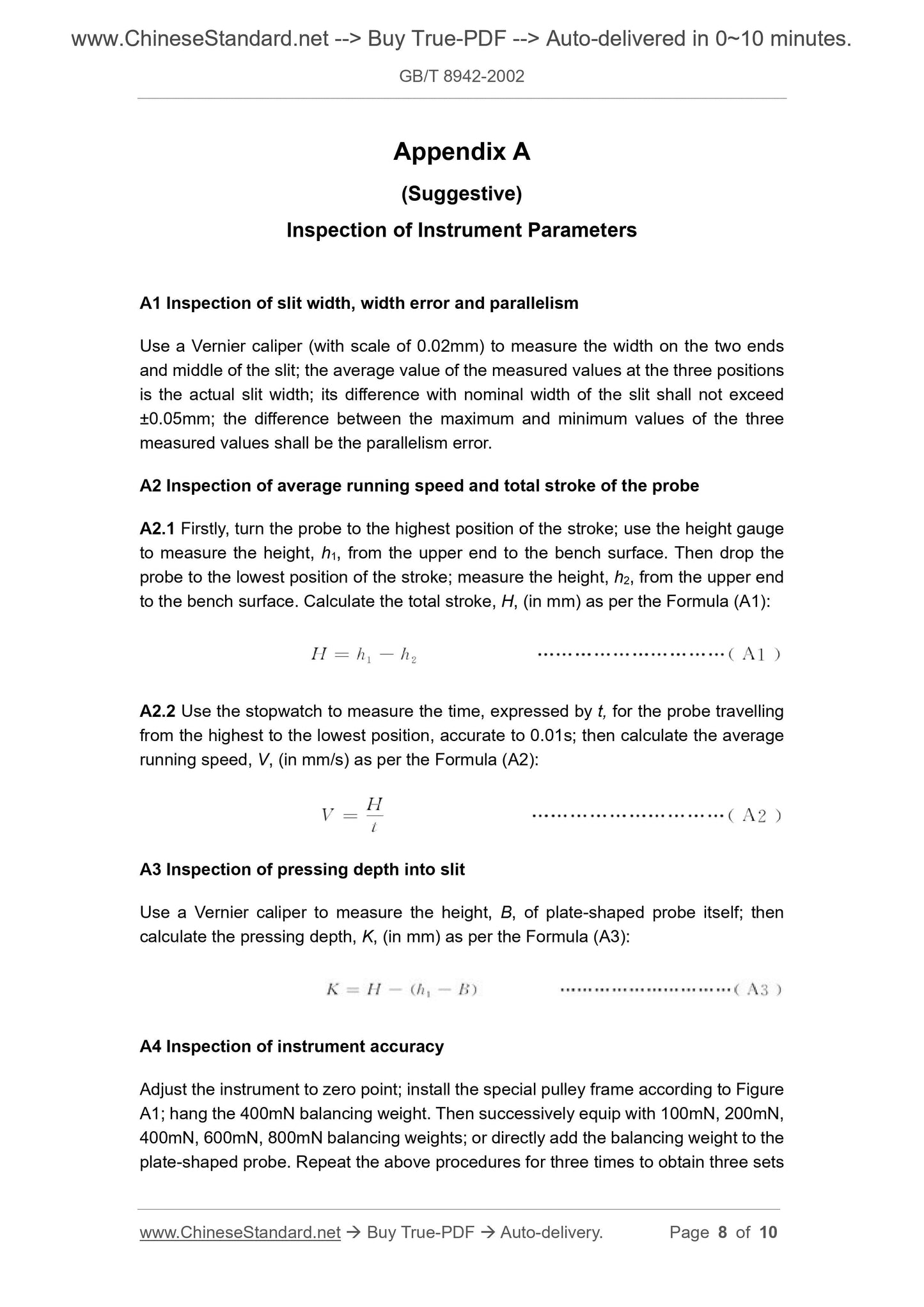1
/
of
5
PayPal, credit cards. Download editable-PDF and invoice in 1 second!
GB/T 8942-2002 English PDF (GB/T8942-2002)
GB/T 8942-2002 English PDF (GB/T8942-2002)
Regular price
$110.00
Regular price
Sale price
$110.00
Unit price
/
per
Shipping calculated at checkout.
Couldn't load pickup availability
GB/T 8942-2002: Paper -- Determination of softness
Delivery: 9 seconds. Download (and Email) true-PDF + Invoice.Get Quotation: Click GB/T 8942-2002 (Self-service in 1-minute)
Newer / historical versions: GB/T 8942-2002
Preview True-PDF
Scope
This Standard specifies the method of using the hand-feeling softness tester todetermine the softness of paper.
This Standard is applicable to various wrinkle toilet paper, tissue paper and its
derivatives, as well as other papers that require softness.
Basic Data
| Standard ID | GB/T 8942-2002 (GB/T8942-2002) |
| Description (Translated English) | Paper. Determination of softness |
| Sector / Industry | National Standard (Recommended) |
| Classification of Chinese Standard | Y30 |
| Classification of International Standard | 85.060 |
| Word Count Estimation | 8,863 |
| Date of Issue | 2002-09-06 |
| Date of Implementation | 2003-01-01 |
| Older Standard (superseded by this standard) | GB/T 8942-1988 |
| Quoted Standard | GB/T 450-2002; GB/T 10739-2002 |
| Issuing agency(ies) | General Administration of Quality Supervision, Inspection and Quarantine of the People Republic of China |
| Summary | This standard specifies: Determination of paper with a soft touch-type meter softness methods. This standard applies to: all kinds of wrinkles toilet paper, Zhi Jinzhi and its derived products, and other performance requirements for soft paper. |
Share
